Step into the enchanting world of Liquidambar styraciflua, commonly known as sweetgum, and discover a tree that brings a burst of color and character to any garden. This captivating species, originating from North America, has earned its place among the favorites of gardeners. In this article, we’ll delve into its history, appearance, care requirements, and unveil some intriguing tidbits about this remarkable tree.
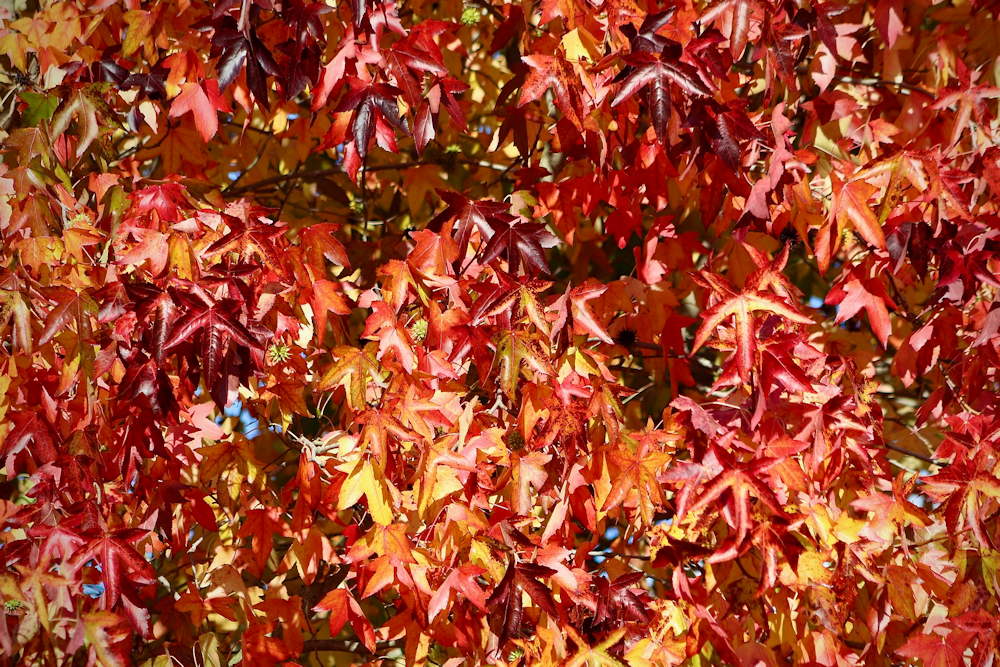
Origin and Common Names
A native of the southeastern United States, sweetgum is celebrated for its vibrant autumnal foliage and distinctive star-shaped leaves. Also known as star gum, redgum or American storax, this tree’s resin has been used historically for medicinal and aromatic purposes, giving it its species name ‘styraciflua,’ meaning ‘flowing with styrax.’

Appearance and Autumn Splendor
Sweetgum is a deciduous tree that can reach heights of 60 to 100 feet (18-30 m), forming an attractive pyramidal shape when young, and gradually becoming more rounded with age. Its striking star-shaped leaves, reminiscent of a maple leaves, which can span up to 7 inches (18 cm) in diameter, provide ample shade during the summer months. However, it is in the fall when sweetgum truly shines, as its leaves transform into a breathtaking palette of red, burgundy, orange and purple hues, creating an autumn spectacle that draws the admiration of all who behold it. This seasonal spectacle lends an enchanting touch to any garden, making the tree a popular choice among landscape artists and gardeners alike.
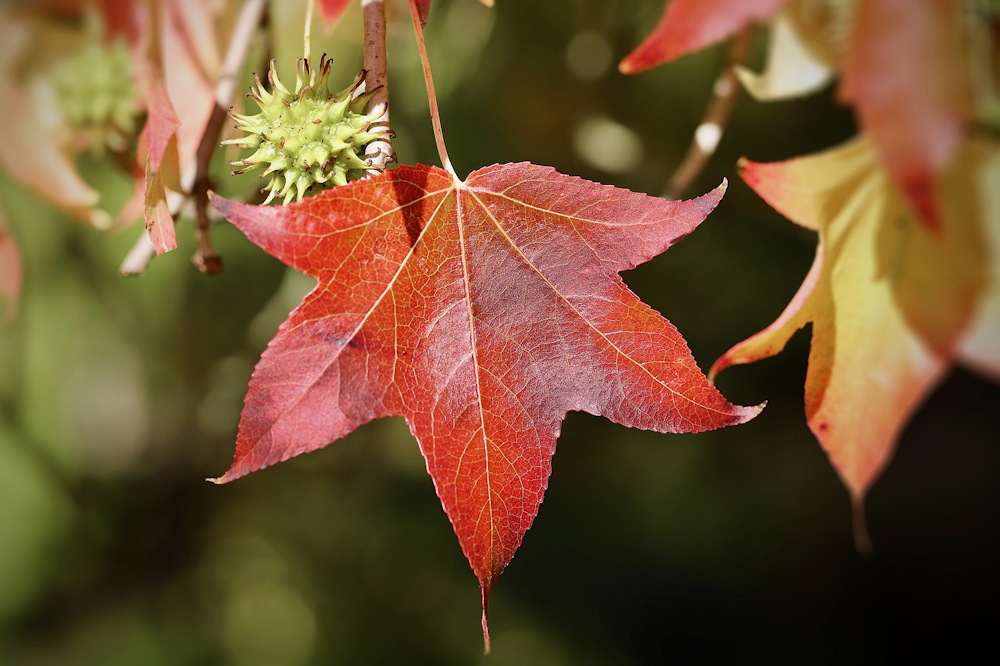
The fruit of the sweetgum tree, often referred to as “gum balls,” are spiky, spherical seed capsules that can range in color from green when young to brown as they mature and dry. These seed capsules are typically about 1 to 1.5 inches (2.5-4 cm) in diameter and add a distinctive texture to the tree’s overall appearance.
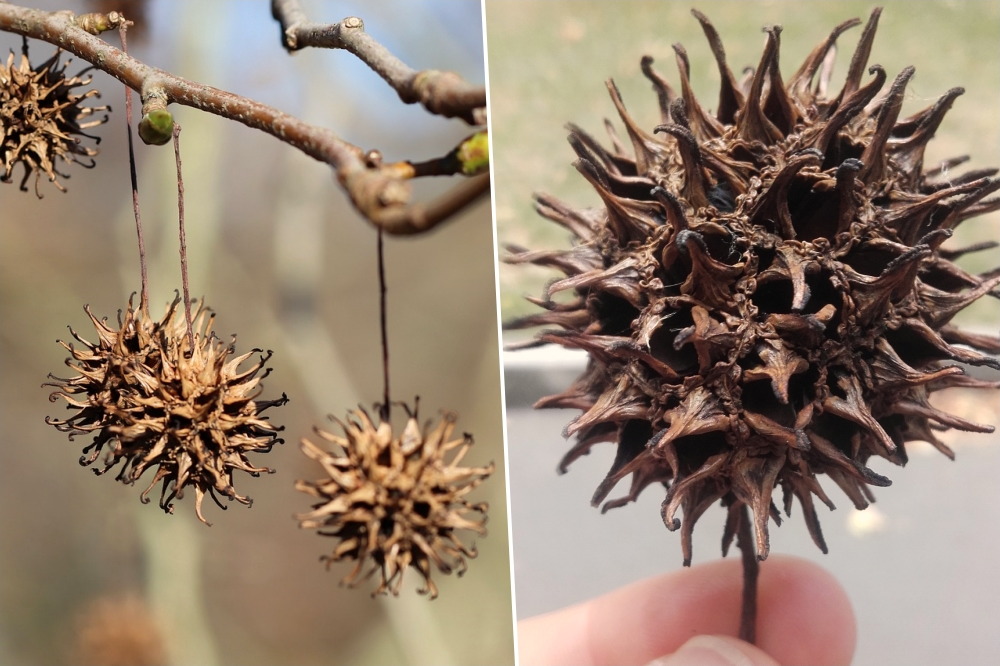
Why Gardeners Choose Sweetgum
Gardeners are drawn to sweetgum for its aesthetic appeal and adaptability. Its ornamental leaves and pleasing shape make it an excellent choice as a shade tree, focal point, or even a street tree. Additionally, the tree’s ability to thrive in a variety of soil types and its resistance to many pests and diseases make it a low-maintenance, yet rewarding addition to any garden. This tree adapts well to various climates, making it accessible to gardeners across a wide range of geographical locations and ensuring that its beauty can be appreciated by many. Its rapid growth rate means you won’t have to wait long to witness its beauty unfold in your garden.
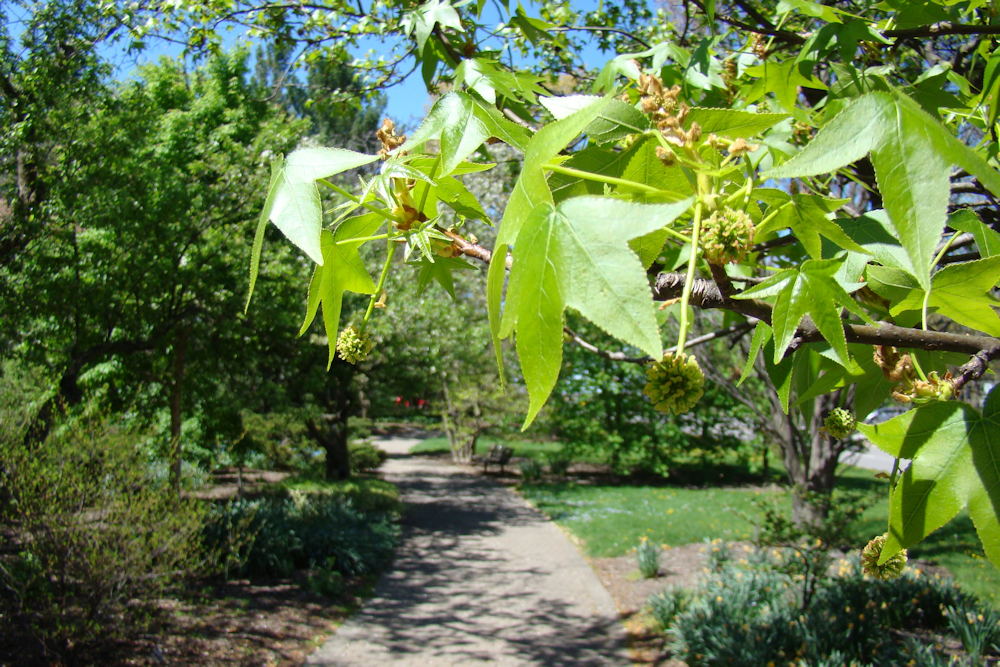
Meeting Sweetgum’s Needs
Select the Right Location
Choose a sunny spot in your garden to plant your sweetgum tree, as it thrives in full sun. Adequate sunlight not only encourages healthy growth but also enhances the tree’s spectacular fall color display. Ensure that the chosen location offers enough space for the tree to reach its mature size without overcrowding other plants or structures.
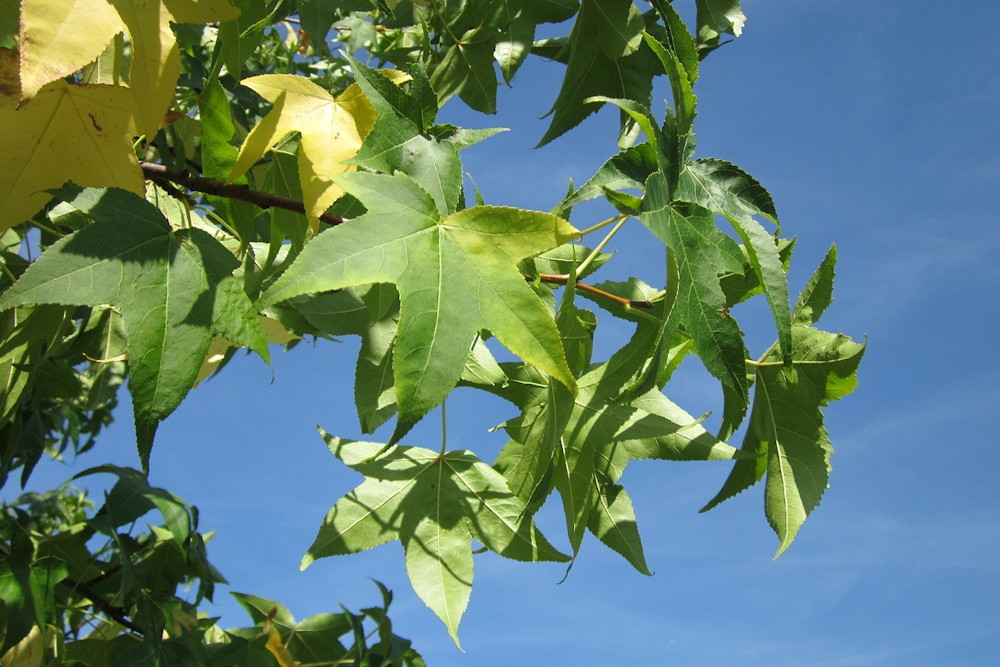
Soil and Water Management
Sweetgum trees prefer well-draining soil. Before planting, amend heavy clay soils with organic matter to improve drainage. While sweetgums are relatively drought-tolerant once established, it’s crucial to provide consistent moisture during the tree’s early years to encourage deep root development. During extended dry periods, deep watering will help ensure the tree’s vitality.
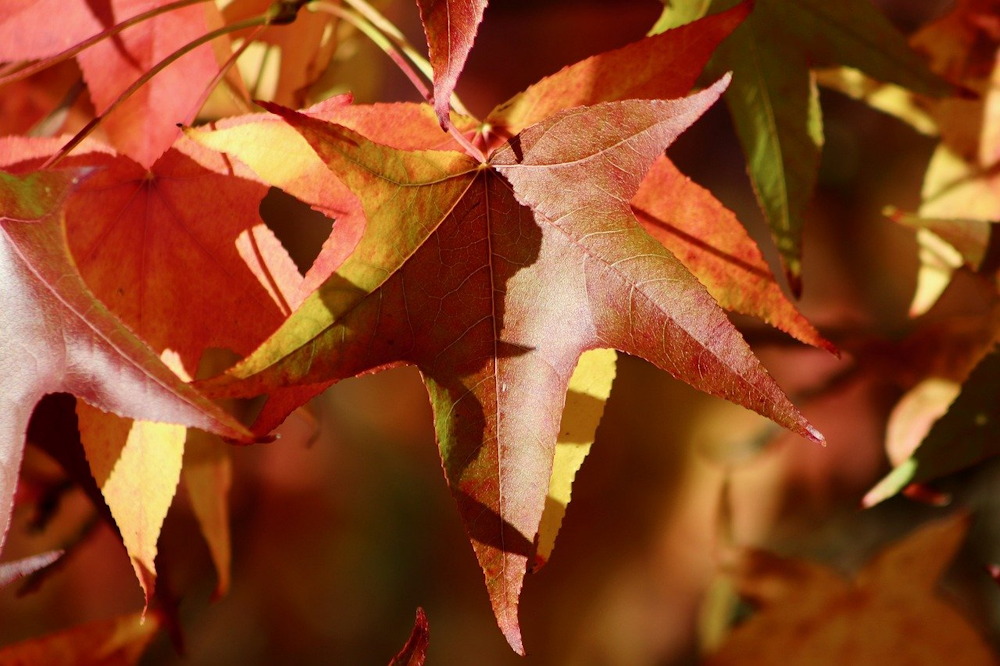
Pruning for Shape and Health
Regular pruning is essential to maintain the desired shape of your sweetgum tree and to remove dead or damaged branches. Perform pruning during the dormant season (late fall to early spring) to minimize stress on the tree. Be cautious not to over-prune, as this can lead to excessive sap production, known as “gum bleeding.” Prune selectively to maintain a balanced and attractive canopy.
By following these tips, your sweetgum tree will not only thrive but also provide years of visual delight and ecological value in your garden.
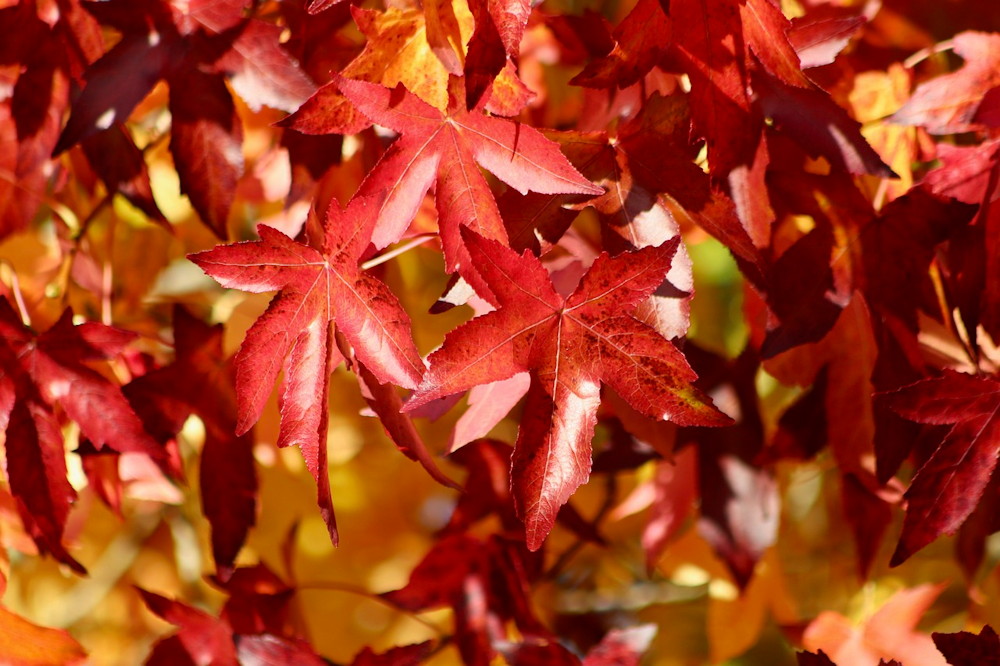
Fascinating Sweetgum Tidbits
- Gum as Chewing Gum: Early American settlers used sweetgum resin as a chewing gum.
- Gum Resin Harvest: Historically, sweetgum resin was harvested for medicinal and aromatic purposes.
- Historical Healing: Native Americans used sweetgum resin in ceremonies and for medicinal purposes, including treating wounds and respiratory ailments.
- Historical Uses: The wood of sweetgum has been employed in furniture-making, cabinetry and even as railroad ties.
- Modern Applications: Today, sweetgum wood is valued for veneer, furniture and flooring due to its fine grain and durability.
- Culinary Delight: Sweetgum seeds, known as “gum balls,” are edible and can be roasted or ground to make a flour substitute.
- Wildlife Haven: The tree’s seeds and twigs are a vital food source and shelter for various bird species and small mammals, making it a valuable addition for birdwatchers and wildlife enthusiasts alike.

Autumn’s Artistry in Your Garden
As you embark on your gardening journey, consider introducing the enchanting sweetgum tree to your outdoor space. With its rich history, splendid autumn display and adaptability, this tree is a true gem for both novice and experienced gardeners. Embrace the seasonal symphony of colors and the unique charm that sweetgum brings, and watch your garden come alive with beauty and vibrancy.









